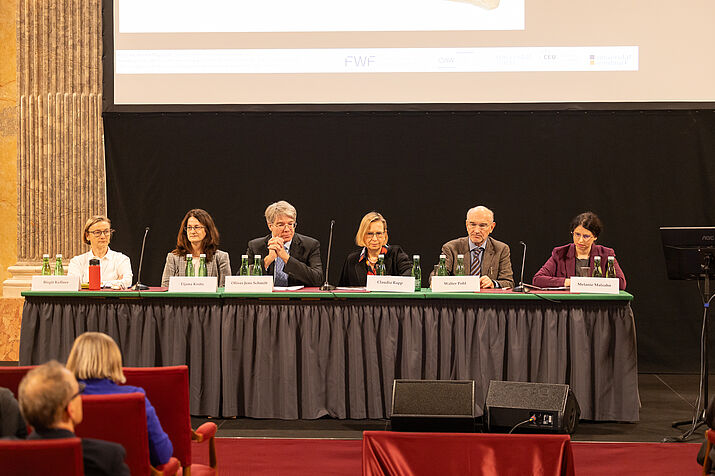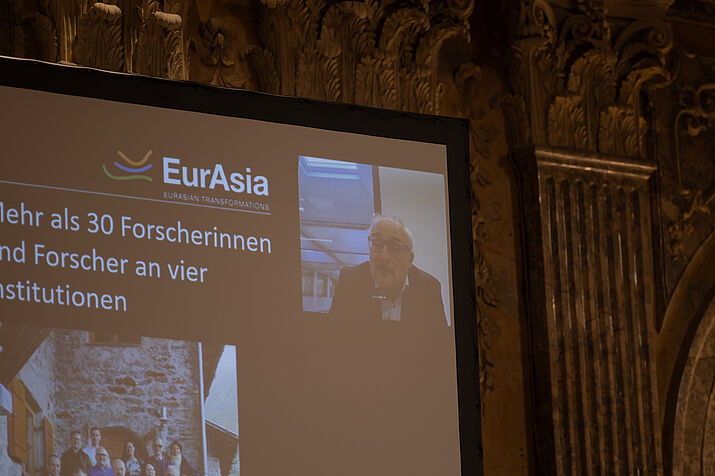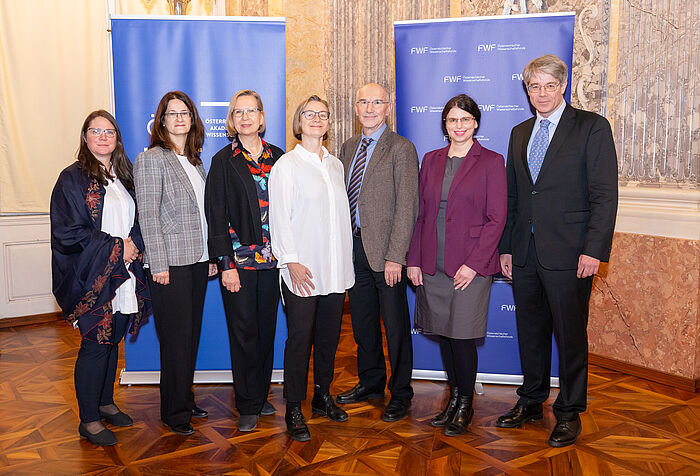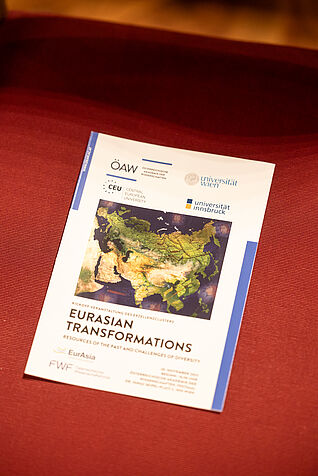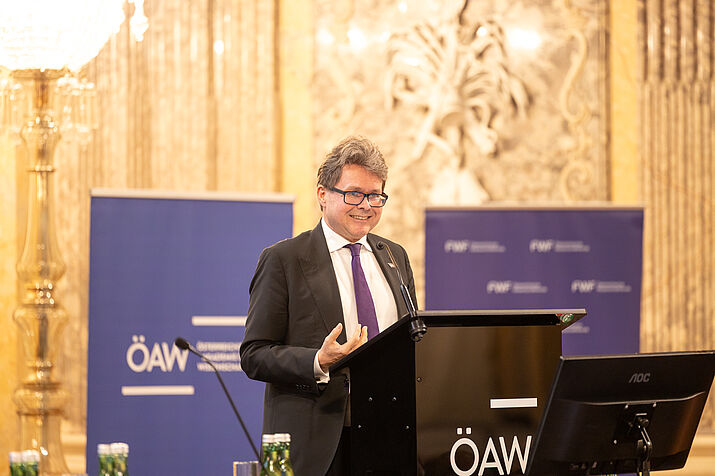Kick-off for the Cluster of Excellence "EurAsian Transformations"
At the prestigious Academy's ballroom on November 20, the highly anticipated official launch event for the "EurAsian Transformations" research project took center stage. Esteemed guests, including Heinz Fassmann, the Academy's President, Martin Polaschek, the Minister for Education, Science and Research, and Christof Gattringer, the President of the Austrian Science Fund (FWF), graced the event with their presence, alongside members of the cluster.
During the opening ceremony, the visionary project's research agenda was eloquently presented by the cluster's esteemed directors - Claudia Rapp, Birgit Kellner, Robert Rollinger, Melanie Malzahn, Walter Pohl, Oliver Schmitt, and Tijana Krstic. Their narrative illuminated the historical significance of representative artifacts from diverse regions of Eurasia housed within Austria's museum and library collections. Notable exhibits inlcuded an ivory handle adorned with an Indian inscription, a palimpsest manuscript from St. Catherine's Monastery in Sinai, the legendary Albanian helmet of Skanderbeg, and a Sanskrit manuscript from Tibet. The presentation prominently showcased the vital research themes of the project, notably encompassing inter-imperial dynamics, mobility and migration, intertwined scripts and religions, strategies of identification and demarcation, and power relations.
Furthermore, the co-research leaders of the cluster, Claudia Rapp and Birgit Kellner, revealed planned international collaborations and public relations initiatives, underscoring the significant student involvement in these endeavors. Embodying a spirit of collaboration, the project endeavors to cultivate research partnerships spanning various institutions and scientific disciplines. Additionally, the project promotes cooperation between diverse institutions - such as the University of Vienna, the University of Innsbruck, the Central European University, and the Academy of Sciences - supported by funding from the FWF.
In the future, anyone seeking knowledge about Eurasia, including media, students, scientists from other nations, or the curious public, will inevitably come across this cluster.
Members of the Cluster of Excellence "EurAsian Transformations" aimed to showcase the Cluster by exploring the histories of selected representative objects.
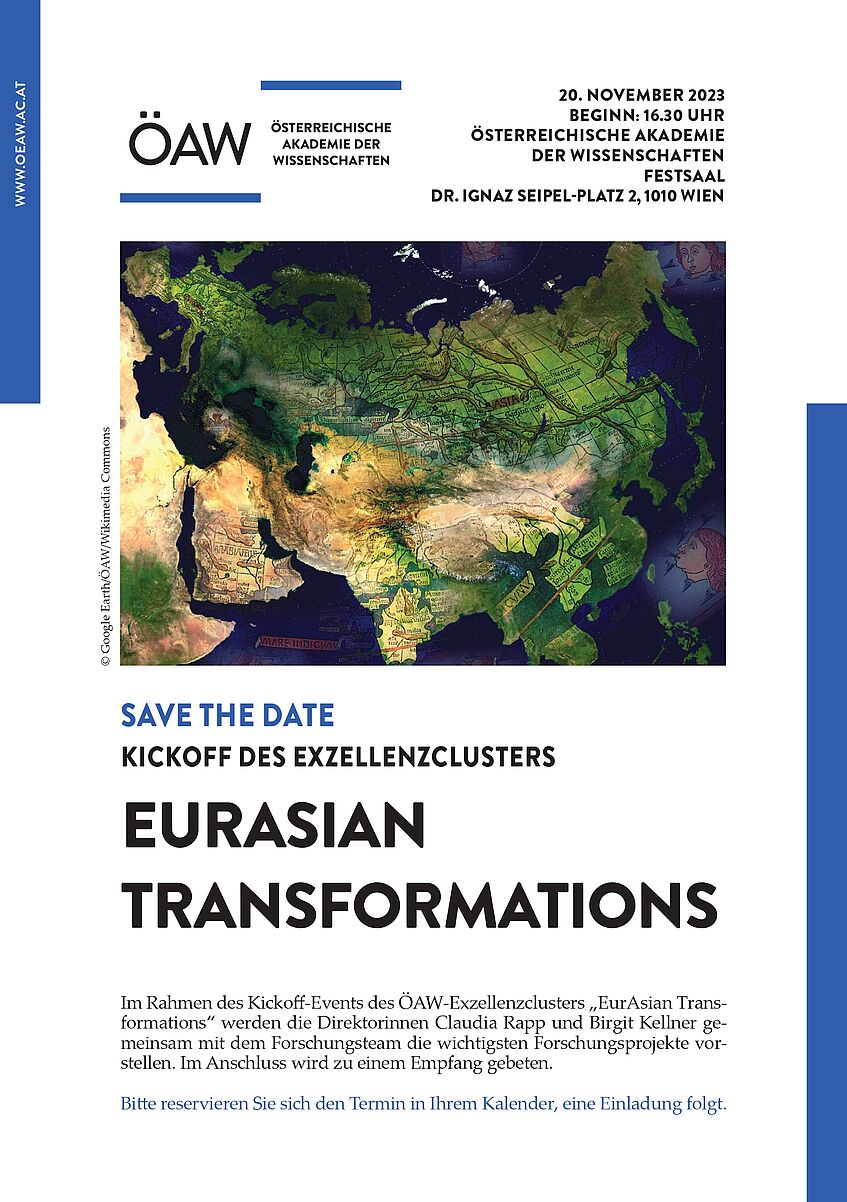
File size: 1.2 MB

